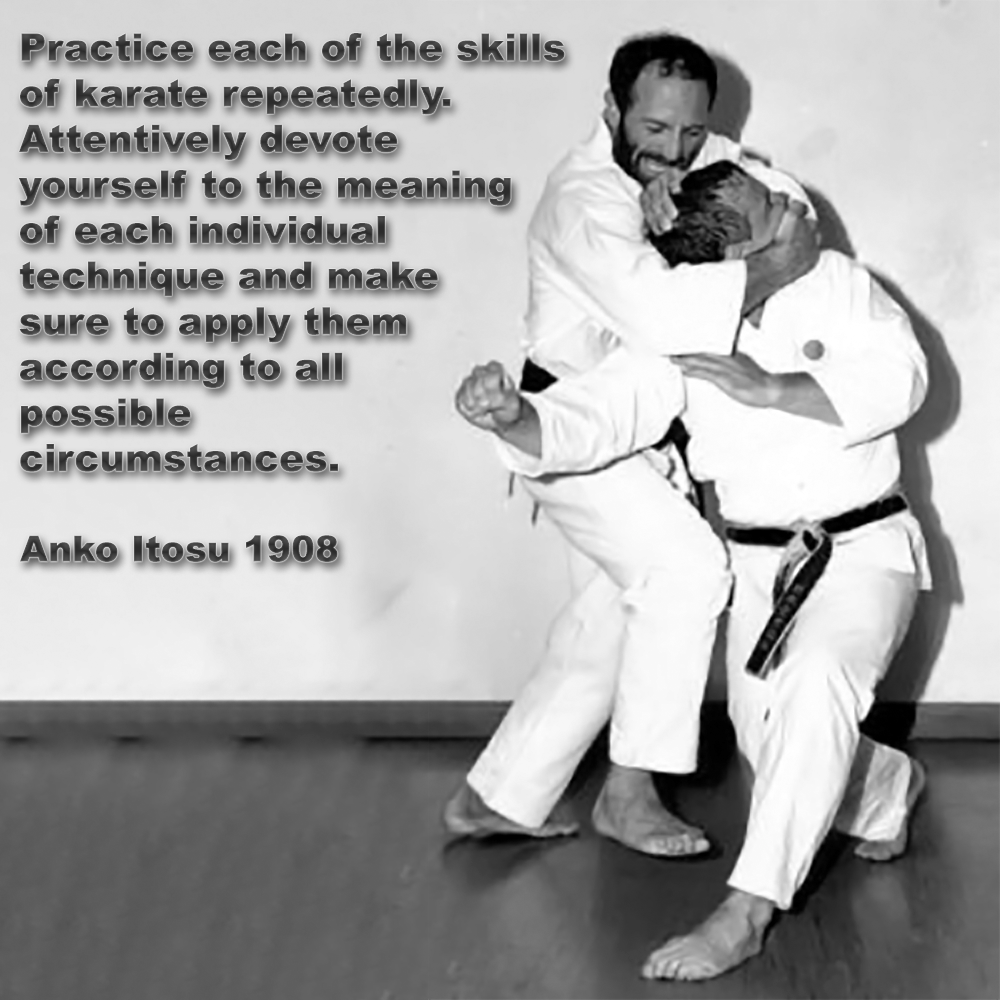
Practice each of the skills of karate repeatedly. Attentively devote yourself to the meaning of each individual technique and make sure to apply them according to all possible circumstances. - Anko Itosu
Posted by ADAM CARTER on DEC 05, 2023

Practice each of the skills of karate repeatedly. Attentively devote yourself to the meaning of each individual technique and make sure to apply them according to all possible circumstances. - Anko Itosu
A comment on one of my articles stated that; ”kata and bunkai are useless”, accusing me of not understanding their non-self-defense design, including a "bullshido" label.
You know what? If you think the movements within kata are ineffective, then for you, that’s true. It just shows a complete lack of understanding.
“Why practice kata?" Is it a pointless exercise that does nothing to increase fighting skill? “Why not just spar?”
Arguing that kata are useless, raising questions about its practicality and relevance in real-world situations, so many misconceptions and misunderstandings contribute to the perception that it lacks efficacy.
Many overlook kata's content, diminishing karate's breadth. Close-range techniques like striking, grappling, throws, joint locks, chokes, and ground fighting are embedded in kata, often unnoticed.
Karate’s creators intended it as a comprehensive self-defense method. While modern practices excel in mid-to-long-range consensual fighting, real-world altercations start close, often involving grappling.
Are we to assume that the past masters got it wrong?
The founders of our art were able fighters who fully understood how real fights occurred.
Today's karate training often revolves around a sporting environment. The original karate techniques, recorded within the kata, ARE the ones for use in real situations against violent and untrained attackers.
I am a firm believer that a great deal of this misunderstanding stems from nomenclature. Labelling a pencil as a hammer deems it "useless" for nails, but invaluable for drawing.
The way kata is often practiced today contributes to the issue. Emphasis is often placed on performances for grading purposes, with less attention given to practical real-world application.
If practitioners fail to engage in scenario-based training that simulates real-world situations, kata may indeed seem ineffective.
I agree that when there is a reliance on non-resisting cooperative training, where the attacker follows a predetermined sequence of movements, applications WILL fail in the real-world.
Applications should not be “karate vs. karate”, this is one of the most common errors rendering it impractical for civilian violence.
The effectiveness of any application is also heavily dependent on the quality of instruction. If instructors fail to convey the underlying principles, students may view it as a mere choreography of movements without any practical use.
Some understanding of the history and development of kata is important if we are to be able to understand them in their correct context, but we should never let history get in the way of practicalities.
Because so many individuals do not understand the need to define context - the scenario frequently unfolds where kata is commonly scrutinized through a lens of “karate versus karate”, leading to a tangled situation that complicates peoples understanding, viewing it as “useless”.
You must grasp the founders intent behind their creation. These forms serve as the conduit through which the combat techniques and principles unique to a specific master or style were passed down from one generation to the next.
The kata aimed to preserve the most potent methods associated with a specific individual or style, preventing their loss over time. Unlike today where more is better, only one or two kata were taught.
Within each kata lies a comprehensive fighting system. The intention was not for kata to be used in combination; instead, each was designed as a self-contained self-defense system. This CRUCIAL aspect is frequently overlooked but holds hugely significant importance.
It is essential to recognize that karate and its effectiveness depends on various factors, including the training approach, instructional quality, and the practitioner's commitment to realistic application.
The techniques recorded within kata were designed for use in civilian self-defense, they were NOT intended to be used in a sporting context, but attacks from a violent and untrained aggressor.
![]() Photo Credit: Courtesy of Terry O’Neill
Photo Credit: Courtesy of Terry O’Neill
